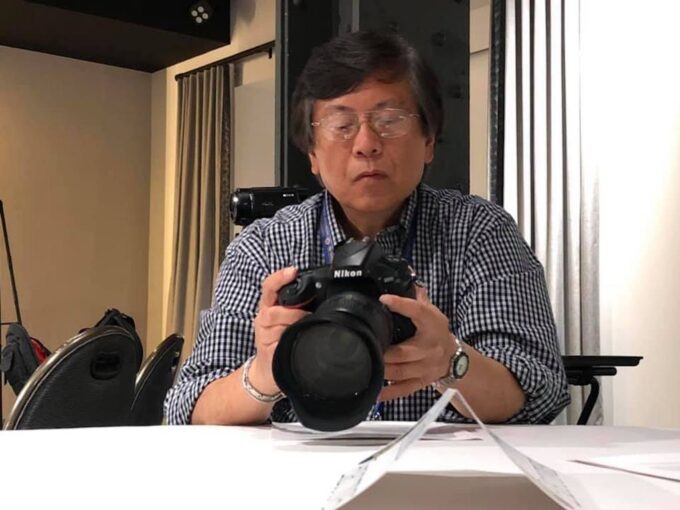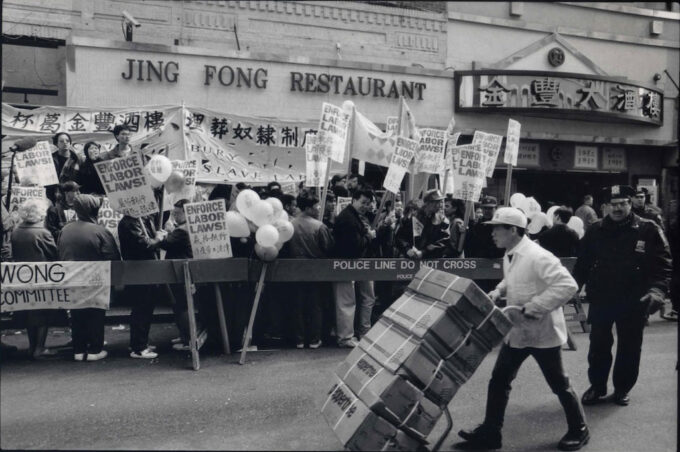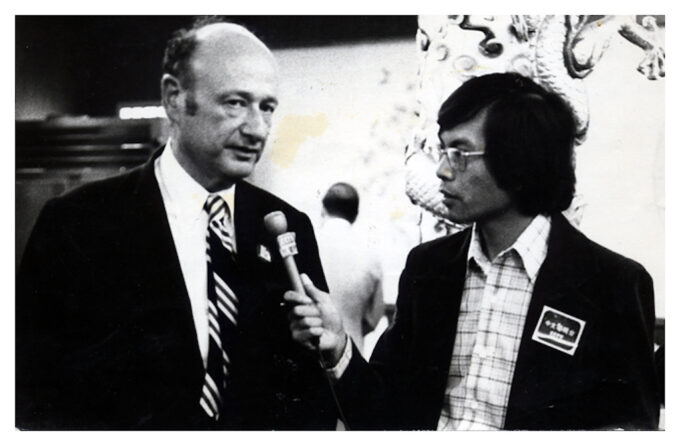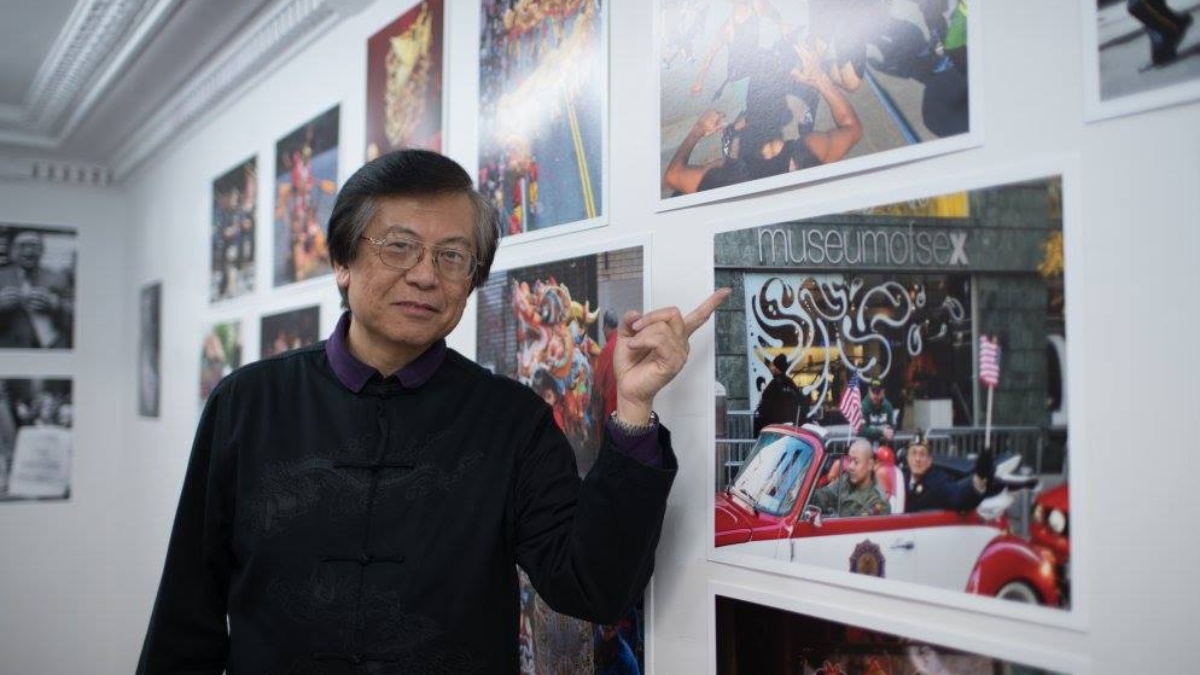Written By: Jeremy Lim
It’s been a little more than three months since the world lost Corky Lee, a moment of intense sadness for a whole community. However, in celebration of Corky Lee Day, let’s look back at the life and legacy of a legendary Asian American figure.
The tongue-in-cheek, self-proclaimed “unofficial Asian American photographer laureate” was “that guy,” the one that everybody knew and loved. Anybody who is anybody within the AAPI sphere seems to have a long and funny story involving Corky Lee. He was a guy that had been catapulted into legend status, and it was hard for many to imagine life without him and his Nikon camera.

Young Kwok “Corky” Lee was born in Queens to Chinese immigrants, his father a laundry man and his mother a seamstress. His interest in photography was birthed early on, with the story famously being that Lee was inspired by a photograph he saw in junior high school. The picture in question was one taken at Promontory, Utah in 1869. This famous image depicting the completion of the First Transcontinental Railroad has been plastered in social studies textbooks for a long time now and, through this usage, has become iconic. However, one thing that was suspiciously missing from the celebratory photograph was the inclusion of any Asian railroad workers.
Asian railroad workers had been key to the construction of the First Transcontinental Railroad but, as is tradition, they were left out of history, swept under the rug in the hopes that nobody would ever find them. Corky Lee saw this injustice and parlayed it into a lifelong love affair with photography. From that moment on, Lee was hellbent on shining a spotlight on Asian Americans, a spotlight that not many other people were willing to shine.
Corky as a photographer made sure he was anywhere Asian Americans were out and about, anywhere that he felt representation was needed. Whether that was a small stage play or a massive protest, Corky made sure he was snapping away.
He would go on to famously document events like the protests that occurred in the wake of the murder of Vincent Chin by racists in 1982, the protests against the firing of broadcast journalist Kaity Tong in 1991, and even the Jing Fong workers’ strike in Chinatown in 1995. Lee’s photojournalism was meant to make up for the lack of coverage and general apathy that the mainstream media had when it came to Asian Americans. However, for the AAPI community, Lee was their mainstream media, and that was good enough.

Though he became best known for his photographs, his life and career was not just a simple summation of all the pictures that he took of others. Corky Lee, the person, was just as important if not more important than his snapshots.
An oft-forgotten part of his career, Lee was a part of the revolutionary Basement Workshop organization, the first Asian American political and arts organization in New York City. As John C. Woo (Executive Director of Asian CineVision) recalls, “Basement Workshop was a hive of activity.”
From teaching the youth of Chinatown how recording equipment is used, to Kung Fu Classes, Basement Workshop was created by the community, for the community, and it’s not a surprise that Corky Lee, among several other influential Asian American activists and artists, was involved with the organization.
Around this time, Lee would be a key figure in the organization of a health fair in Chinatown in 1971, where activists helped bring accessible healthcare into a predominantly Asian community. At this fair, locals were given free testing for a variety of diseases including diabetes and tuberculosis. The event was a massive success.
Throughout the ‘70s and ‘80s, Lee continued to take pictures, photographing Asian Americans both at work and play, showing them in their communities and showcasing them in their day-to-day lives. He eventually got a job at Expedi Printing, a commercial printing company. Even at his day job, Lee found time and space to help advance Asian Americans in their fight for relevance. Woo recalled, “Corky would always do printing for the community at cost, even though printing at the time was getting super expensive.”
Lee, unsurprisingly, also had his fingerprints all over Asian CineVision (ACV). According to Woo, “From an ACV point of view, we have maybe 10,000 photographs. 5,000 of them are Corky’s. Corky would always show up at the ACV events.”

In 2002, Corky Lee finally got to do what it felt like he always wanted to do: unleash photographic justice at Promontory Summit, Utah. Lee organized and gathered Asian Americans and relatives of Chinese railroad workers from the 1860s and posed them in the same fashion as the famous 1869 picture. History can’t be rewritten, but it certainly can be atoned for, and Lee proved this that day. Another more publicized photograph was then taken in 2014, on the 145th anniversary of the original. He described the act of revising a piece of history that was long overdue as “photographic justice.” Full circle his career had come, a career that brought joy, inspiration and representation to so many.
In a world packed to the brim with uncertainty and chaos — with COVID-19 still running roughshod over a lot of the world and hate crimes against Asians on the rise — Corky Lee was indispensable. But, when Lee passed away in January due to coronavirus complications, people were in shock; they were left speechless. A man that always seemed like he would be around to document everything for everybody, an ever present figure, was suddenly gone.
Corky Lee has been described as an absolute pillar of the Asian American community. However, rather than a pillar, Lee always seemed much more like a load-bearing wall. He was somebody that was irreplaceable and, once he left us, the feeling was that there would be nobody there to take over his mantle. The Asian American community, however, did not crumble. Instead, we rallied.
Tributes were held to honor and remember everything he did and all the lives he touched, with LaMama Experimental Theater Club holding a particularly memorable virtual one, peaking at 400 participants and lasting upwards of three hours. Friends, family, community leaders, even politicians were sitting in that Zoom call, sharing their personal Corky Lee stories. Instead of going quiet into that good night, we have sprung up at a crucial point in history to uphold the values and beliefs that Corky Lee and so many others have pushed for since the very beginning: representation and justice. Corky Lee knew that in order for Asian Americans to get a foot in the door, we needed to be seen, so he enabled the rest of the world to see who we really are.
Rest in Power, Corky Lee, and rest well, because the work never stops. We’ve got a long fight ahead of us.

